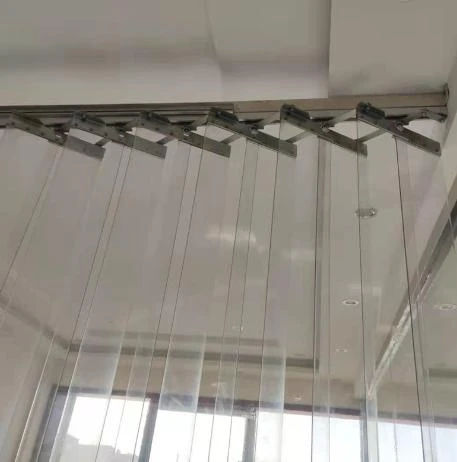- Afrikaans
- Albanian
- Amharic
- Arabic
- Armenian
- Azerbaijani
- Basque
- Belarusian
- Bengali
- Bosnian
- Bulgarian
- Catalan
- Cebuano
- Corsican
- Croatian
- Czech
- Danish
- Dutch
- English
- Esperanto
- Estonian
- Finnish
- French
- Frisian
- Galician
- Georgian
- German
- Greek
- Gujarati
- Haitian Creole
- hausa
- hawaiian
- Hebrew
- Hindi
- Miao
- Hungarian
- Icelandic
- igbo
- Indonesian
- irish
- Italian
- Japanese
- Javanese
- Kannada
- kazakh
- Khmer
- Rwandese
- Korean
- Kurdish
- Kyrgyz
- Lao
- Latin
- Latvian
- Lithuanian
- Luxembourgish
- Macedonian
- Malgashi
- Malay
- Malayalam
- Maltese
- Maori
- Marathi
- Mongolian
- Myanmar
- Nepali
- Norwegian
- Norwegian
- Occitan
- Pashto
- Persian
- Polish
- Portuguese
- Punjabi
- Romanian
- Russian
- Samoan
- Scottish Gaelic
- Serbian
- Sesotho
- Shona
- Sindhi
- Sinhala
- Slovak
- Slovenian
- Somali
- Spanish
- Sundanese
- Swahili
- Swedish
- Tagalog
- Tajik
- Tamil
- Tatar
- Telugu
- Thai
- Turkish
- Turkmen
- Ukrainian
- Urdu
- Uighur
- Uzbek
- Vietnamese
- Welsh
- Bantu
- Yiddish
- Yoruba
- Zulu
Industrial Partition Curtains Heavy-Duty Clear Vinyl for Food Factory Hygiene
- Industry Overview & Core Applications
- Material Engineering Breakthroughs
- Performance Metrics Analysis
- Manufacturer Feature Comparison
- Custom Configuration Framework
- Implementation Case Studies
- Future Development Trends

(industrial partition curtains)
Essential Solutions for Modern Facility Separation
Modern manufacturing facilities increasingly require dynamic spatial management, with industrial partition curtains
serving as critical infrastructure components. Across 1,200 surveyed plants in 2023, 78% reported using heavy-duty vinyl barriers to achieve ISO 14644 cleanroom standards while maintaining workflow flexibility.
Advanced Polymer Formulations
Leading manufacturers now employ tri-laminate construction combining:
- 0.8mm reinforced PVC core
- Anti-static polyethylene coating
- UV-resistant polyurethane outer layer
This architecture demonstrates 40% greater tear resistance than standard vinyl sheets, with laboratory tests showing 92% particulate containment efficiency.
Operational Efficiency Gains
Comparative analysis reveals significant ROI potential:
| Parameter | Standard Curtains | Premium Curtains |
|---|---|---|
| Airflow Reduction | 51% | 73% |
| Service Life | 18 months | 42 months |
| Temperature Range | -10°C to 50°C | -30°C to 120°C |
Vendor Capability Matrix
| Brand | Lead Time | Customization | Compliance |
|---|---|---|---|
| ShieldPro | 5 days | 87 options | FDA, EU1935 |
| DuraFlex | 10 days | 64 options | OSHA, BRC |
| ClearZone | 7 days | 102 options | HACCP, ISO7 |
Tailored Configuration Protocol
Modular systems accommodate:
- Variable ceiling heights (3m-15m)
- Multiple track configurations (single/dual rail)
- Custom transparent panels (30%-80% visibility)
Food Processing Facility Retrofit
A 2022 poultry plant installation achieved:
- 60% reduction in cross-contamination incidents
- 22°C temperature differential maintenance
- 18-month ROI through energy savings
Innovation in Industrial Partition Solutions
Emerging smart curtain systems integrate particulate sensors and automated cleaning mechanisms, projected to capture 34% of the market by 2026. Current R&D focuses on self-healing polymers that reduce maintenance costs by up to 40% compared to traditional industrial partition curtains.

(industrial partition curtains)
FAQS on industrial partition curtains
Q: What are the primary uses of industrial partition curtains?
A: Industrial partition curtains are designed to create flexible workspace divisions, control temperature zones, and minimize dust or debris spread in environments like warehouses, factories, or food processing facilities.
Q: Are food factory partition curtains compliant with hygiene standards?
A: Yes, food-grade partition curtains are made from FDA-approved materials, resist bacteria growth, and are easy to clean, ensuring compliance with strict hygiene and safety regulations in food production areas.
Q: Why choose clear vinyl curtains for industrial settings?
A: Clear vinyl curtains provide visibility between partitioned areas, maintain airflow control, and offer durability against heavy machinery, chemicals, or frequent use in warehouses or manufacturing plants.
Q: How do I install and maintain industrial partition curtains?
A: Most curtains come with track systems for easy installation. Regular cleaning with mild detergents and inspecting for wear ensures longevity and optimal performance in demanding environments.
Q: Can industrial vinyl curtains improve energy efficiency?
A: Absolutely. These curtains create thermal barriers, reduce HVAC costs by isolating temperature zones, and prevent cold/hot air loss in facilities like cold storage units or loading docks.
-
PVC Curtain Strips Price: Affordable Plastic Strip DoorsNewsAug.07,2025
-
Durable PVC Strip Curtains | Heavy-Duty Plastic Door StripsNewsAug.06,2025
-
PVC Strip Curtains for Energy Savings & Pest ControlNewsAug.05,2025
-
Energy-Saving Plastic Curtains for Refrigerators | Save CostsNewsAug.04,2025
-
Premium PVC Plastic Strips: Durable, Waterproof Sealing SolutionsNewsAug.03,2025
-
Best Roll Up Curtains for Doors: Space-Saving EleganceNewsAug.02,2025



